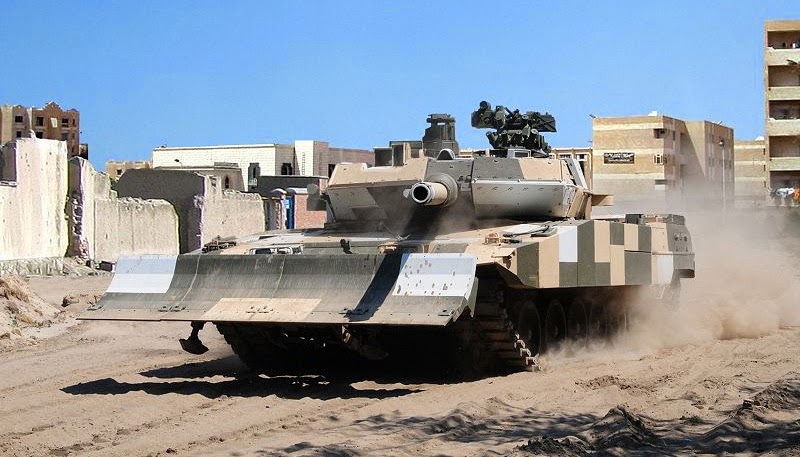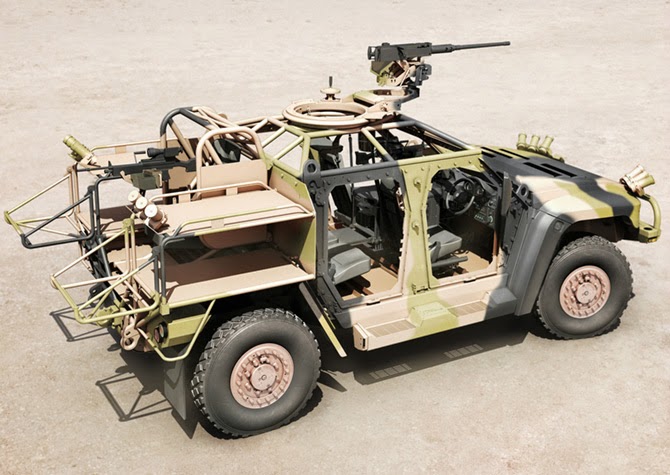M109A7 PIM
US Army's Renewed Howitzer
M109A7 PIM
The replacement for the M109A6 in U.S. service is the M109A7 Paladin Integrated Management (PIM). The M109A7 shares common components with the M2 Bradley Fighting Vehicle such as the engine, transmission, and tracks. This creates commonality with other systems and maximizes costs-savings in production, parts inventory and maintenance personnel.
The M109A7's on-board power systems harness technologies originally developed for the Non-Line-of-Sight Cannon. The M109A7 can sustain a one round per-minute rate of fire and a maximum rate of fire of four rounds per-minute.
Non-Line of Sight Cannon NLOS-C
The one that got away...
The system as proposed looks to add capabilities that the current M109 systems do not offer. One of the proposed systems advantages is the ability to switch shell types quickly on a one by one basis allowing an illumination round to be followed by a point detonation round, to be followed by an area effect round. This would give the system the ability to fire different rounds as required by different fire calls or to change types of shells. For instance, destroying a building then engaging anyone fleeing the area with the next round.
The rate of fire in the proposed system would enable more rounds sent downrange in a given amount of time, allowing more firepower per system than is available with the current M109 system. Another capability offered by the NLOS Cannon is the 'multiple rounds simultaneous impact' mission or MRSI (pronounced mercy). A MRSI mission is where the cannon fires several rounds at different trajectories allowing the rounds to impact on the same target at the same time, resulting in little or no reaction time for the enemy to adjust its position. This is accomplished by including the autoloader from the canceled Crusader project which achieves the goals of a much improved fire rate with a reduction in required crew from 5 in Paladin to 2.
NLOS-C
Getting back to M109A7 PIM
With wholesale replacements of the electronics gear and firing drive, and increased maneuverability, speed and crew protection, the new Paladin “is going to be the leader” of the platforms in the Armor Brigade Combat Team (ABCT), he said, “and the other programs are going to be struggling to keep up with where it has now gone.”
Beginning in August, the old Paladin chassis will begin to be shipped to the Anniston Army Depot, Ala., where they’ll be stripped of usable parts for the new system. The same engine, transmission, drives and tracks used on the most recently upgraded M2/M3 Bradley infantry fighting vehicles will be incorporated onto the new vehicle.
The new Paladin also brings back the electric gun drive system from the Non-Line of Sight cannon canceled in 2009 as part of the scrapped $20 billion Future Combat Systems program. NLOS replaces the old hydraulic firing system.
Once those parts are harvested, the new Bradley chassis built at BAE Systems’ facility in York, Pa., will be sent to a new production facility the company is building in Eglin, Okla., for final assembly.
Using existing parts on new systems is a production method the Army is also employing on its Stryker V-Hull program — also at Anniston — and Bassett said “the idea of leveraging both our organic base and our commercial base together for a platform is really kind of the new normal. Most of the programs we run right now leverage both of those capacities.”
While weighing about 10,000 pounds heavier than its predecessor, the new Paladin — at 78,000 pounds — has been built with the capacity to grow to about 110,000 pounds while traveling at about 38 mph. That is actually faster than the previous model while being more maneuverable than the current Bradley, according to Adam Zarfoss, director of artillery programs at BAE.
The added speed and maneuverability “allows us to stay in pace with the rest of the ABCT” for the first time, said Lt. Col. Michael Zahuranic, the Army’s product manager for Self Propelled Howitzer Systems.
In October, BAE was awarded a contract worth up to $688 million to produce up to 66 vehicle sets, which includes the Paladin.
Overall, the Army plans to buy 551 new Paladins by 2027, with the first models starting production by March. The low-rate initial production award calls for BAE to deliver 66 Paladins along with their ammunition carrier vehicles, also based on the Bradley chassis, which will roll off the assembly line at a rate of three per month. The schedule calls for the work in Anniston to begin in May and York in June.
Sources:
- Wikipedia
- US Army Breaking Out the Big New Guns, Paul McLEARY, Defense News.
©2014 Warfare Technology

.jpg)
























